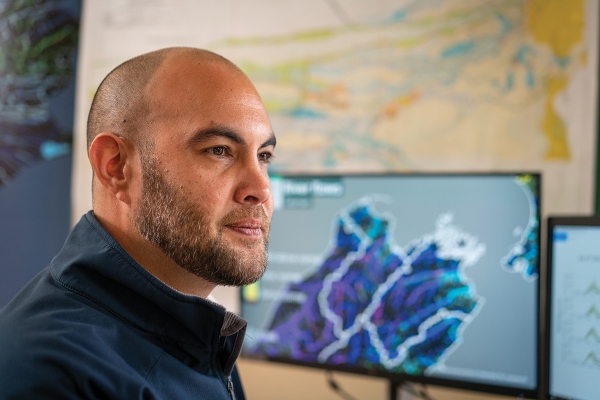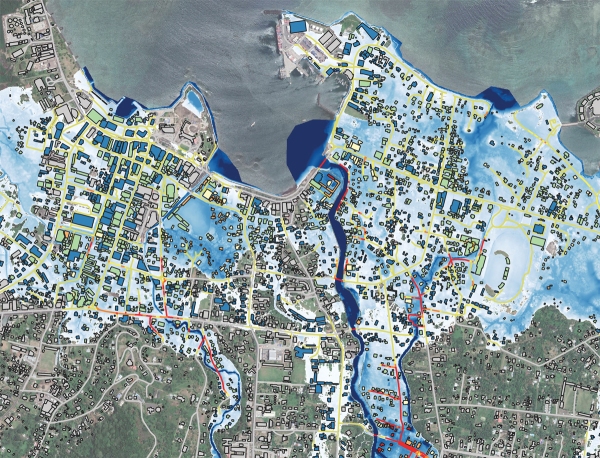Severe tropical cyclone Val slammed into Samoa in December 1991.
The worst cyclone in more than a century, wind gusts of up to 240km/h ripped through the islands, leaving 14 dead and $200 million worth of damage.
As an eight-year-old, Shaun Williams remembers standing in Apia in the midst of the destruction and watching his home being torn down around him.
Three decades later, and now working as a hazard specialist in Christchurch, Dr Shaun Williams says he feels as connected to the climate risks in the Pacific as ever.
Williams manages NIWA’s Environmental Hazards Group. His work encompasses natural hazards and risk across Aotearoa New Zealand and the Southwest Pacific, with a specific focus on geophysical, hydrometeorological and climate hazard science.
In a nutshell, Williams works to produce information on a wide range of natural events so that the right decisions can be made to protect people and communities from our ever-changing environment.
He is a busy man. From scenario-based modelling in the flood-prone town of Westport, to helping Tongan authorities analyse the impact of the Hunga Tonga-Hunga Ha‘apai volcanic eruption, Williams’s work crosses many physical boundaries. The focus, however, he says, is always on communities.
“Without a doubt we are living in a time when climate change and disaster risk management are very real threats."
“I work to produce usable, high-quality information that can be used to support resilient decision making and adaption planning to ensure the safety of people.
“Ultimately the benchmark is people. The safety of people, the protection of life, the resilience of people.”
His initial aspiration to become a “rock scientist” led Williams to study earth sciences and geography at the University of the South Pacific in Fiji.
His first job was with the Samoa Meteorological Service, where he helped to establish Samoa’s national earthquake seismic network.
He sees his growing expertise in risk and hazards analysis as a natural progression.
“A pathway was already laid out and I continued to walk down that pathway.”
Williams moved to New Zealand to complete his PhD and joined NIWA in 2017.
Earlier this year, his work on the hazard software tool, RiskScape, saw Williams and his colleagues on stage in Wellington at the NZ Hi-Tech awards, facing a crowd of 1100 people and shaking hands with the Prime Minister.
RiskScape is a software system developed by NIWA and GNS Science that enables communities to better understand the risks and impacts of natural hazards on people and property.
“It is a very enriching experience actually seeing the tool being used and seeing the outcomes for people.”
Williams may be a long way from Apia, but his heart still lies in the Pacific and, as always, his focus remains on people. He acknowledges his background brings a special perspective to his work.
“It is important that we actually have people who are familiar with the cultural context of those regions, who can relate directly to their needs and understand their situation."
“Understanding the etiquette and the way of doing things shows a level of respect for our Pacific partners.”
With climate change, especially the threat of sea-level rise, an ever-growing issue for the Pacific, Williams feels his heritage also brings added responsibility.
“In a small island state like Samoa you grow up with a sense of respect for others and a sense of duty to lead through service to your community. And that includes the lands and environment supporting them,” says Williams.
“This type of work is the sort you do for others, not for yourself.”
This story forms part of Water and Atmosphere - December 2022, read more stories from this series.


